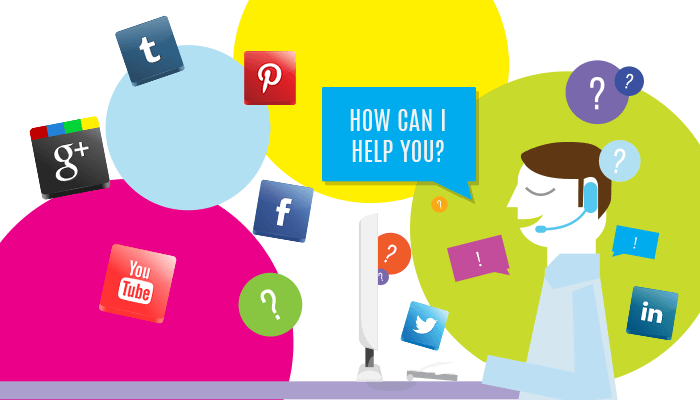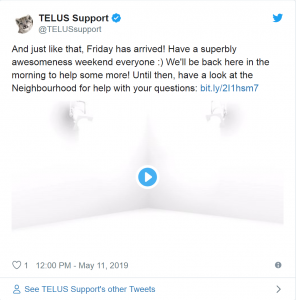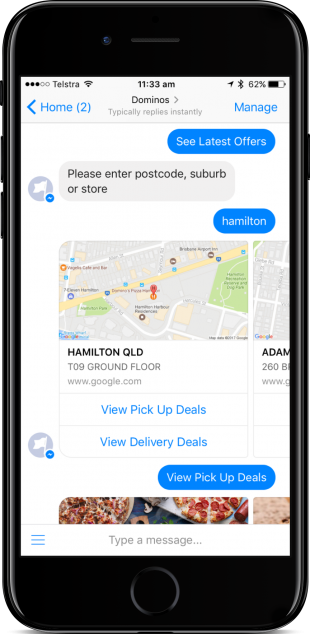Continue with some other ideas to make Social media customer service work…
5. Develop your idea of what customer service could be
Think broadly about what qualifies as a social media customer service problem.
For instance, a Warby Parker customer tweeted three different glasses looks he was considering. He used the #warbyhometryon hashtag however did not embody the brand’s social handles.
This may not be considered a typical customer service problem. Still, Warby’s customer service team popped in to let him know which frames they thought were the best pick.
That type of above-and-beyond service delights customers. It is no shock Warby Parker gets rave reviews for customer service.
6. Always respond
This might sound obvious, however, it’s a rule not all firms follow.
People asking questions of your brand on social media might or might not be your customers (yet). Answering all questions on social channels shows that you have responsive customer service. This proves to potential customers that you care about your clients’ needs.
Vancouver nail salon Classy Claws has built a loyal following in real life by being highly responsive to her followers on Instagram. Particularly, she has built client relationships by responding to direct messages.
Clients might have questions about her service, or about how to book an appointment. Answering questions from existing and potential customers has helped Classy Claws become a destination nail studio with over 56,000 Instagram followers.
7. Respond quickly
Simply responding isn’t enough. When customers reach out to brands on social, they expect a fast, friendly response.
A study by Twitter showed that 71% of users expect a brand to reply within one hour. AFacebook study showed that people expect a quicker response via social messaging than through other types of communication (including phone).
Your Fb Page reveals right up front whether you reply rapidly to customer messages. When you reply to 90% of messages and have a response time of 15 minutes or less, you will get a Very Responsive to Messages badge.
That does not mean your social customer service team should be available 24/7. However, it does mean it’s a great idea to set expectations about when people could expect you to respond.
On Fb, you could use Away Messaging and Instant Replies to provide an automated response. This lets customers know when you could reply. Get step-by-step instructions on how to do that in our Facebook Messenger guide.
On Twitter, be sure your social customer service hours of availability are clear. Let customers know if you are going offline. Provide links to where they could discover self-help solutions. Direct them how to reach other customer service channels (like your call center) in the meantime.
8. Try a chatbot for common service requests
If millennials are your target market, consider this. 63 % of them are comfortable with “nonhuman customer service interactions.” Which means chatbots.
Chatbots are a good way to offer basic social customer service 24/7. They offer customers the information they need immediately, without involving your customer service team. They tend to work greatest for easy questions that you get often.
For instance, Domino’s Australia created a Fb chatbot to address one of the most common questions the pizza firm received through its Fb page. “What deal could I get on my pizza today?”
9. Use the right channels
For your social customer care to be effective, you have got to use the channels where your audience spends their time.
KLM first began offering social customer service utilizing Facebook Messenger.
Once it mastered Fb social customer care with the help of a chatbot, the airline expanded its care efforts to WhatsApp. KLM’s reps are also available on Twitter, WeChat and Kakao Talk, giving them extensive reach into existing communities of users.
Monitor mentions of your brand and products to see where people are already talking about your company online. This will provide you with a great sense of what channels to prioritize for your social media customer service.
10. Take public conversations private
Customers might contact you on your social pages for questions or requests that would be greater addressed through a private channel. For example, you may need confidential data like a booking number or account name.
Rather than asking customers to take the extra step of launching a private conversation by a direct message, you could use built-in tools to take the conversation private yourself.
On Twitter, you could include a “Send a Private Message” call-to-action button in a tweet. This permits a customer to contact you through a DM simply by tapping the button.
Spotify’s Twitter customer service account, @SpotifyCares, use this function once they ask customers to provide personal info.
To add the private message button, just add the following link to a tweet:
https://twitter.com/messages/compose?recipient_id=[your numeric user ID]
Note that you should use your account’s numeric user ID, not your handle. To find your number ID, go to your Twitter profile and click on Settings and Privacy, then click on Your Twitter data. Your numeric ID appears just below your account name.
On Fb, you could reply to public comment with a private message. This takes the conversation to Fb Messenger, where you could interact more confidentially. Under the customer’s comment, just click on Message to reply privately.
When you send your message, a note will appear under the comment that says “Page responded privately.” This shows other users that you addressed the request, even though your response isn’t visible.







